Dell OptiPlex GX110 Handleiding
Dell
Niet gecategoriseerd
OptiPlex GX110
Bekijk gratis de handleiding van Dell OptiPlex GX110 (137 pagina’s), behorend tot de categorie Niet gecategoriseerd. Deze gids werd als nuttig beoordeeld door 45 mensen en kreeg gemiddeld 5.0 sterren uit 23 reviews. Heb je een vraag over Dell OptiPlex GX110 of wil je andere gebruikers van dit product iets vragen? Stel een vraag
Pagina 1/137

Dell™OptiPlex™GX110SystemUser'sGuide
Models DCP, DCS, DCM, and MMP
Notes, Notices, and Cautions
Throughout this guide, there may be blocks of text printed in bold type or in italic type. These blocks are notes, notices, and cautions, and they are
used as follows:
NOTICE: A NOTICE indicates either potential damage to hardware or loss of data and tells you how to avoid the problem.
Information in this document is subject to change without notice.
©1999 Dell Computer Corporation. All rights reserved.
Reproduction in any manner whatsoever without the written permission of Dell Computer Corporation is strictly forbidden.
Trademarks used in this text: Dell, OptiPlex, OptiFrame, , Dell OpenManage Dimension, Latitude, Inspiron, DellWare, and the DELL logo are trademarks of Dell Computer
Corporation; Microsoft, Windows, MS-DOS, and WindowsNT are registered trademarks of Microsoft Corporation; Intel and Pentium are registered trademarks of Intel
Corporation; 3Com is a registered trademark of 3Com Corporation; IBM and OS/2 are registered trademarks of International Business Machines Corporation; Novell and
NetWare are registered trademarks of Novell, Inc. As an ENERGY STAR Partner, Dell Computer Corporation has determined that this product meets the ENERGY STAR
guidelines for energy efficiency.
Other trademarks and trade names may be used in this document to refer to either the entities claiming the marks and names or their products. Dell Computer Corporation
disclaims any proprietary interest in trademarks and trade names other than its own.
Initial release: 19 Aug 1999
Last revised: 3 Dec 1999
Introduction
Setup and Operation
Drivers and Utilities
System Setup
Installing Upgrades
Troubleshooting
Technical Specifications
NOTE: You can obtain the latest version of this document from the Support section of the Dell Web site at http://www.dell.com.
NOTE: A NOTE indicates important information that helps you make better use of your system.
CAUTION: A CAUTION indicates a potentially hazardous situation which, if not avoided, may result in minor or moderate
injury.

Back to Contents Page
BasicChecks:Dell™OptiPlex™GX110SystemUser'sGuide
Overview
If your Dell computer system is not working as expected, and if you are not sure what to do, start your troubleshooting with the procedures in this
section. This section guides you through basic steps to solve basic computer problems. It also directs you to further detailed troubleshooting
information and procedures to solve more complex problems.
Backing Up Your Files
If your system is behaving erratically, back up your files immediately. If your system has a tape drive installed, see the documentation that came
with the tape backup software for instructions on performing a backup operation. Otherwise, see your operating system documentation for
information on backing up data files.
Basic Checks
See the following sections in the order indicated until the problem is resolved:
lIf your computer is wet or damaged, see "Troubleshooting a Wet Computer" or "Troubleshooting a Damaged Computer."
lPerform the steps in "Checking Connections and Switches."
lPerform the steps in "Look and Listen."
lIf your system did not complete the boot (start- up) routine, see "Getting Help."
lIf your system displayed a message or emitted a beep code, see "Messages and Codes."
lVerify the settings in System Setup.
lRun the Dell Diagnostics.
Checking Connections and Switches
Improperly set switches and controls and loose or improperly connected cables are the most likely source of problems for your computer, monitor,
or other peripheral (such as a printer, keyboard, mouse, or other external equipment).
Complete the following steps in the order indicated to check all the connections and switches:
1. Turn off the system, including any attached peripherals (such as the monitor, keyboard, printer, external drives, scanners, or plotters).
Disconnect all the AC power cables from their electrical outlets.
2. If your computer is connected to a power strip, turn the power strip off and then on again. If the problem is not resolved, try another power
strip or connect the system directly to an electrical outlet to see if the original power strip is faulty.
3. Connect the system to a different electrical outlet.
If doing so corrects the problem, the original outlet is faulty.
Overview
Checking Connections and Switches
Backing Up Your Files
Look and Listen
Basic Checks
System Setup
NOTE: The boot routine is the operating system's attempt to load its files into memory from the boot- -up sector on the hard disk
drive or another bootable device.
NOTE: See "Controls and Indicators" and "Connecting Peripheral Devices" for the location of your computer's external connections
and switches.

4. Reconnect the system to an electrical outlet. Make sure that all connections fit tightly together, and turn on the system.
5. If the problem is resolved, you have corrected a faulty connection.
6. If your monitor is not operating properly, see "Troubleshooting the Monitor."
7. If your keyboard is not operating properly, see "Troubleshooting the Keyboard."
8. If your mouse or printer is not operating properly, see "Troubleshooting I/O Ports." Otherwise, see "Look and Listen."
Look and Listen
Looking at and listening to your system is important in determining the source of a problem. Look and listen for the indications described in Table
1.
If after looking and listening to your computer you have not resolved the problem, continue with the recommendations in "System Setup."
Table 1. Boot Routine Indications
Look/Listen for:
Action
An error message
See "Messages and Codes."
The monitor's power indicator
Most monitors have a power indicator (usually on the front bezel). If the monitor's power indicator does not light
up, see "Troubleshooting the Monitor."
The power and hard-disk
drive indicators
Use the power and hard-disk drive indicators to help you identify a system problem when you press the power
button to turn on the computer but the system does not boot.
The power indicator
Use the power indicator to help you identify a system problem when you press the power button to turn on the
computer but the system does not boot:
lA blinking yellow power indicator before power- -on self test (POST) indicates that the power supply may be
faulty. In rare cases, the system board may be faulty. See "Getting Help" for instructions on getting
technical assistance from Dell.
lA solid yellow power indicator before POST indicates that a device on the system board may be faulty or
isincorrectlyinstalled.Besurethatthemicroprocessorisproperlyseated,remove all expansion cards,
and then reboot. If the system does not boot, see "Getting Help" for instructions on getting technical
assistance from Dell.
lA solid green power indicator and a beep code during POST indicate that a dual in-line memory module
(DIMM) may be faulty or is not properly seated. Remove all DIMMs, install only one DIMM, and then reboot.
Repeat this procedure until you identify the faulty or improperly seated DIMM.
lA solid green power indicator and no beep code and no video during POST indicate that the monitor or
the integrated video controller may be faulty. See "Troubleshooting the Monitor." If the monitor is operating
properly and is correctly connected, see "Getting Help" for instructions on getting technical assistance
from Dell.
lA solid green power indicator and no beep code with video during POST indicate that an integrated
system board device may be faulty. See "Getting Help" for instructions on getting technical assistance
from Dell.
The keyboard indicators
Most keyboards have one or more indicators (usually in the upper-right corner). Press the <Num Lock> key, the
<Caps Lock> key, and the <Scroll Lock> key to toggle the keyboard indicators on and off. If the keyboard
indicators do not light up, see "Troubleshooting the Keyboard."
The diskette-drive access
indicator
The diskette-drive access indicator should quickly flash on and off when you access data on the diskette drive.
On a system running a Microsoft®Windows®operating system, you can test the drive by opening Windows
Explorer and clicking the icon for drive A. If the diskette-drive access indicator does not light up, see
"Troubleshooting Drives."
The hard-disk drive access
indicator
The hard- -disk drive access indicator should quickly flash on and off when you access data on the hard disk
drive. On a system running a Windows operating system, you can test the drive by opening Windows Explorer
and clicking the icon for drive C. If the hard-disk drive access indicator does not light up, see "Troubleshooting
Drives."
A series of beeps
See "Messages and Codes."
An unfamiliar constant
scraping or grinding sound
when you access a drive
Make sure the sound is not caused by the application program you are running. The sound could be caused by a
hardware malfunction. See "Getting Help" for instructions on getting technical assistance from Dell.
The absence of a familiar
sound
When you turn on your system, you can hear the hard-disk drive spin up, and the system tries to access the boot
files from the hard-disk drive or the diskette drive. If your system boots, see "Dell Diagnostics." If your system
does not boot, see "Getting Help."
Product specificaties
| Merk: | Dell |
| Categorie: | Niet gecategoriseerd |
| Model: | OptiPlex GX110 |
Heb je hulp nodig?
Als je hulp nodig hebt met Dell OptiPlex GX110 stel dan hieronder een vraag en andere gebruikers zullen je antwoorden
Handleiding Niet gecategoriseerd Dell

29 Juli 2025
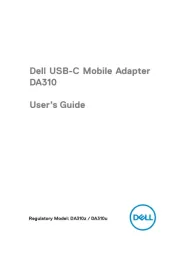
14 April 2025

14 April 2025

3 December 2024

3 December 2024

3 December 2024

3 December 2024

3 December 2024

3 December 2024
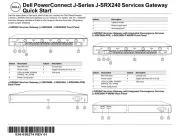
3 December 2024
Handleiding Niet gecategoriseerd
- Mellanox
- X Rocker
- Monoprice
- PreSonus
- Ugears
- Florabest
- Body Sculpture
- EA Elektro Automatik
- GoXtreme
- Axagon
- Mountfield
- Hansa
- Ekko
- Arlo
- VAEMI
Nieuwste handleidingen voor Niet gecategoriseerd

15 September 2025

15 September 2025

15 September 2025

15 September 2025
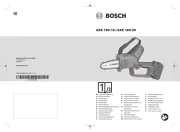
15 September 2025

15 September 2025

15 September 2025
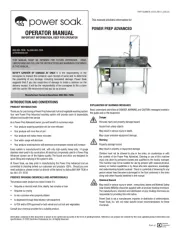
15 September 2025

15 September 2025
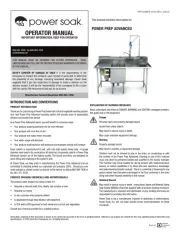
15 September 2025